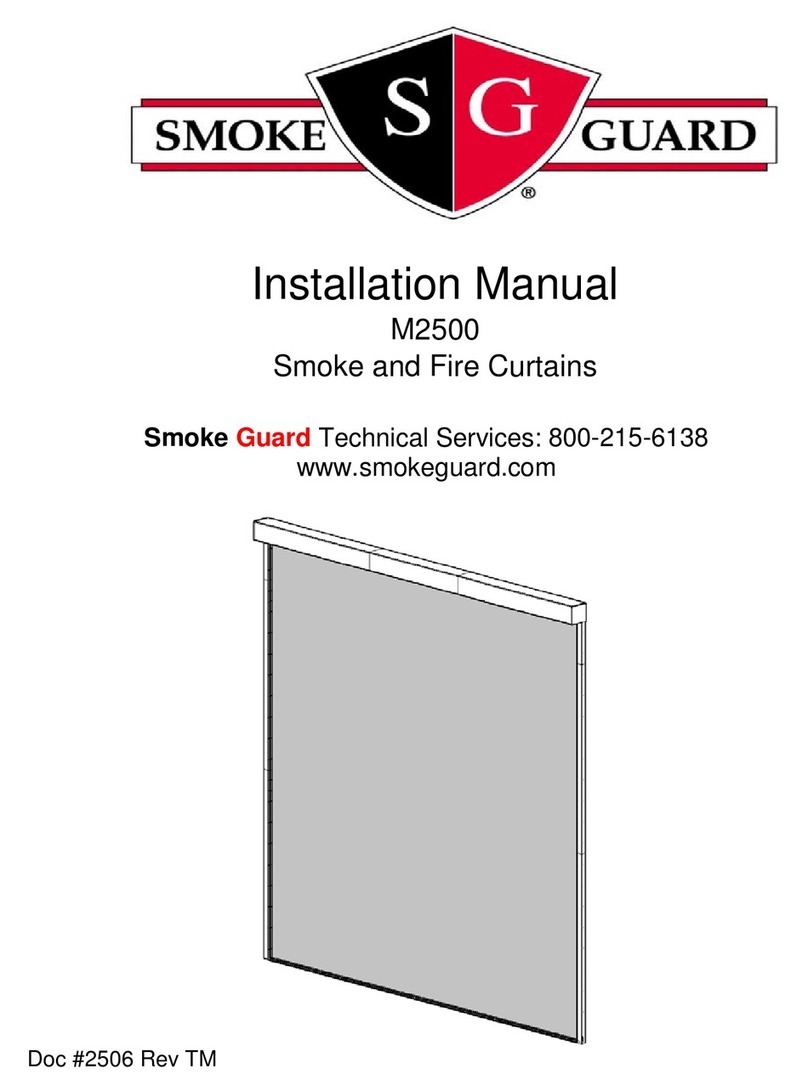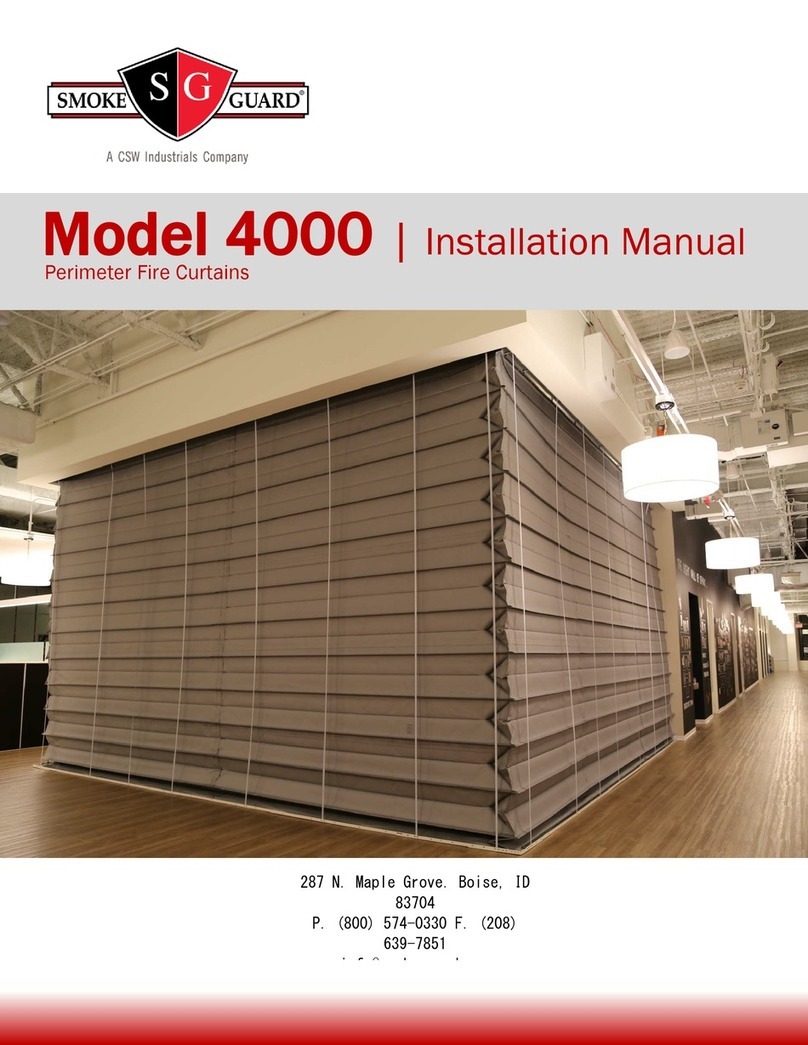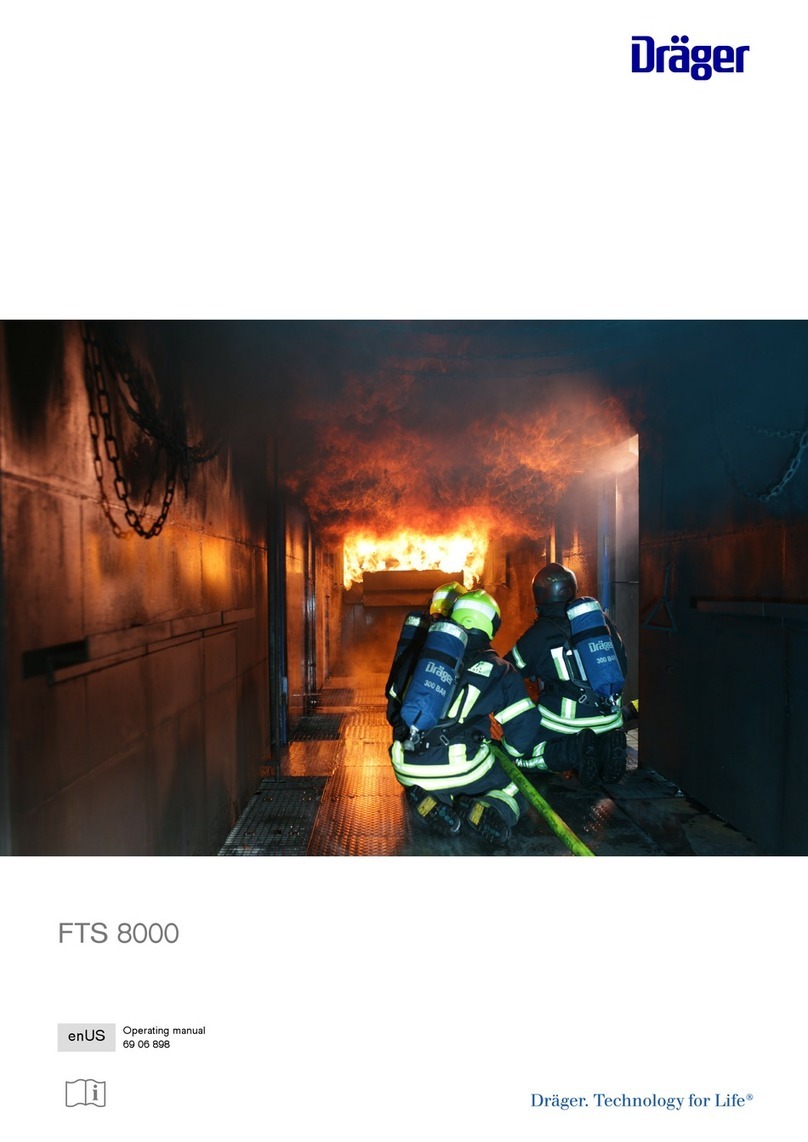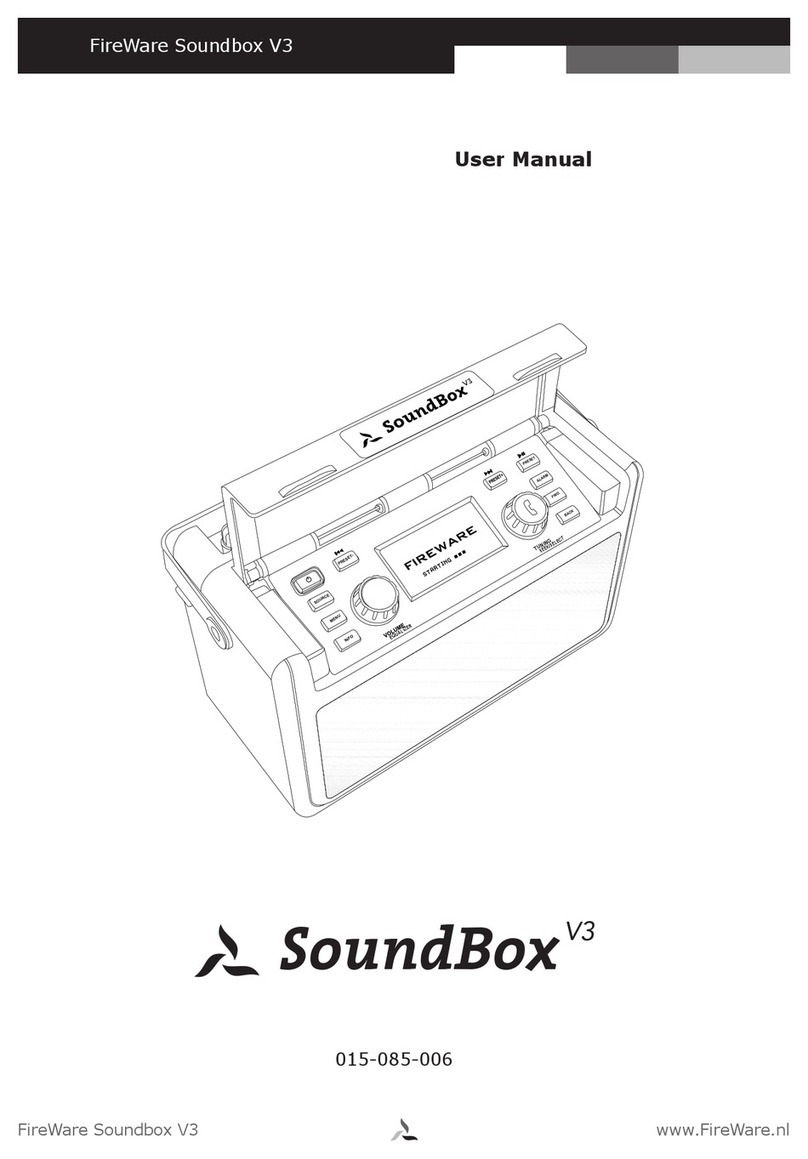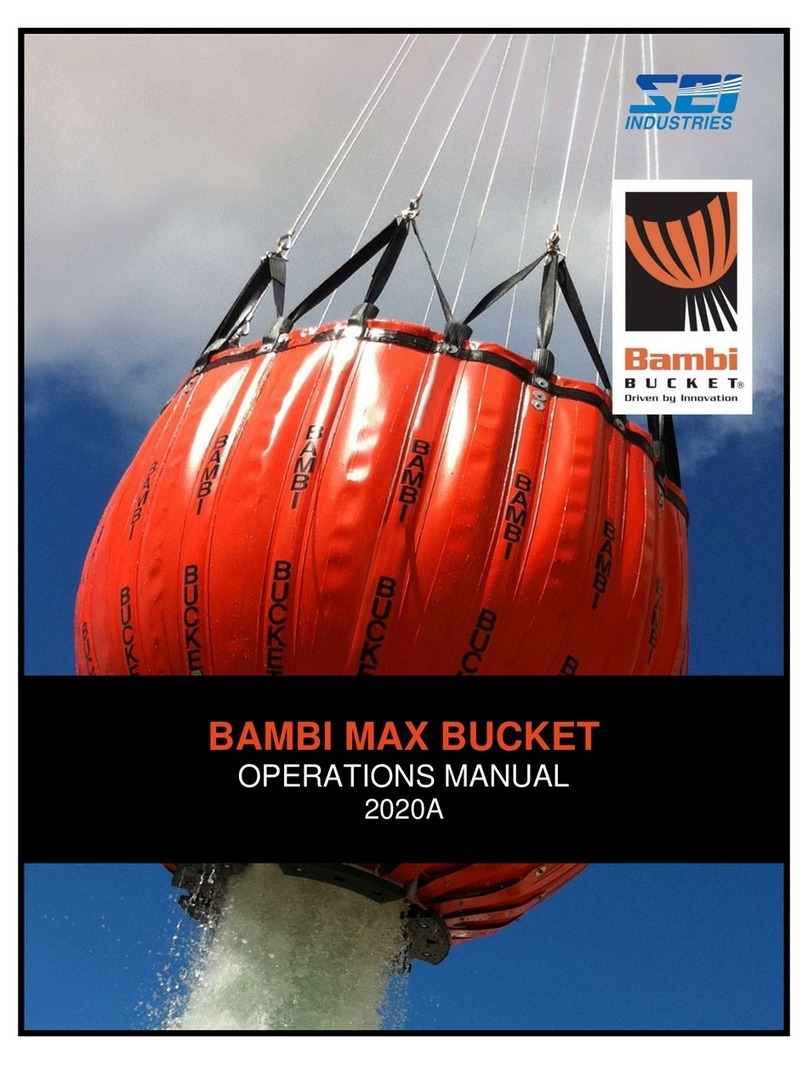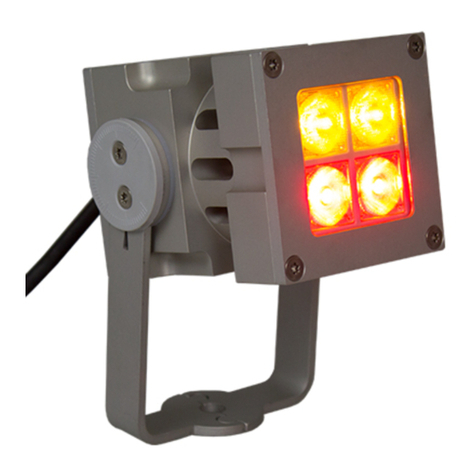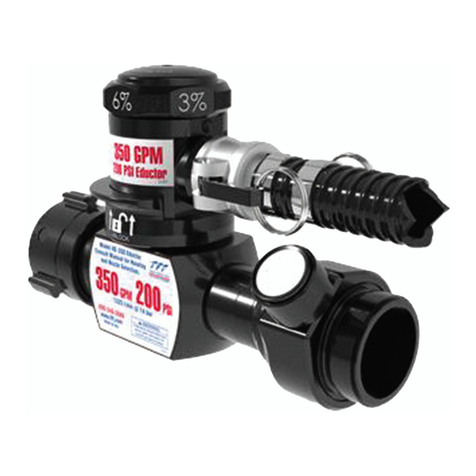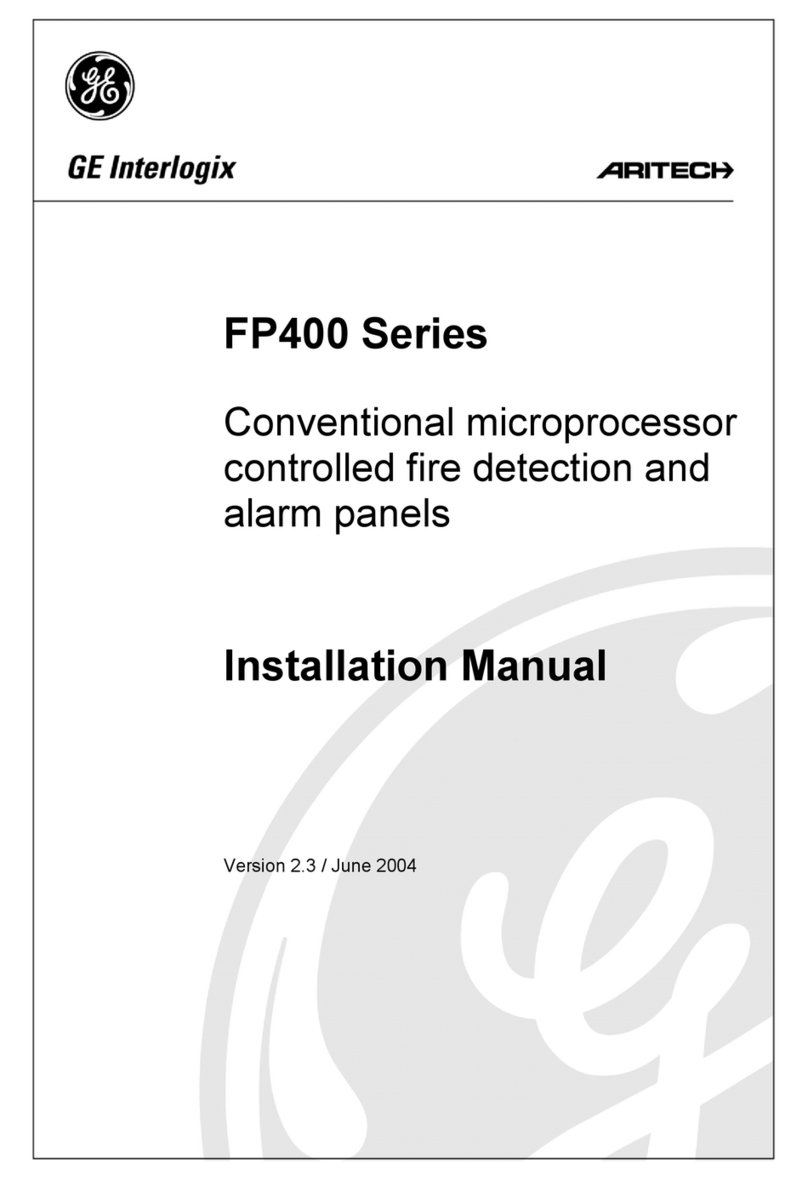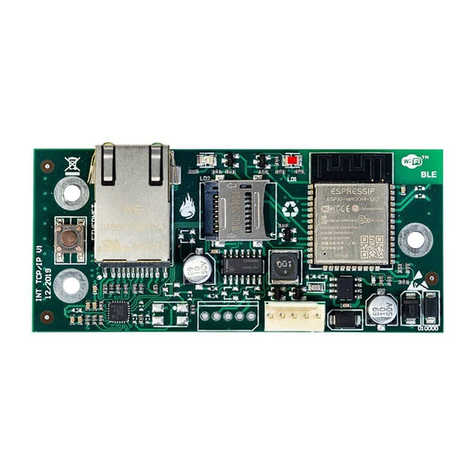Smoke Guard 2100 Manual

Doc #2102, Rev 2 1
Operation & Maintenance Manual
for Model 2100 Fire+Smoke systems from Smoke Guard, Inc.
287 N. Maple Grove - Boise, ID 83704
Phone: (800) 574-0330 Fax: (208) 639-7851
E-Mail: info@smokeguard.com
Website: http://www.smokeguard.com
Call your local Smoke Guard distributor
for answers to questions about your system

Doc #2102, Rev 2 2
Table of Contents
Table of Contents 2
Introduction 3
The responsibilities of the building owner 4
Testing frequency ....................................................... 4
Alterations and additions ............................................. 4
System acceptance testing........................................... 4
Operation 5
What makes up the Model 2100 Smoke Guard system..... 5
How the Smoke Guard system works ............................ 6
What to do if the curtain has deployed .......................... 7
Maintenance/Testing 8
Before you test........................................................... 8
Functional test and visual inspection ............................. 9
Record Keeping 10
Why keep records?.....................................................10
What records should you keep? ...................................10
Mandatory Semi-Annual Cycle Test 11
Appendix: Troubleshooting a System Fault 12
System fault annunciation...........................................12
Clearing a system fault ...............................................12
M2100 Status LED interpretations ................................13
Notes on status LED interpretations .............................14
Recommended corrective action ..................................14

Doc #2102, Rev 2 3
Introduction
This is the official operation, maintenance, and testing manual for the Model
2100 Smoke and Model 2100 Fire+Smoke curtains from Smoke Guard, Inc.
NOTE: Read this entire manual before operating, maintaining or testing your
Smoke Guard system.
The Smoke Guard Model 2100 Fire+Smoke system is a code compliant, 2
hour (120 minute), Fire Endurance rated curtain and complies with the UL
10D standard. It is also rated to UL 1784 according to the requirements of
smoke and draft control assemblies defined in NFPA 105.
The M2100 is designed to be installed into the building structure with the
main housing located at ceiling level and guides mounted to each wall of the
opening to be protected. The main housing contains a smoke or fire rated
curtain stored around a curtain tube. During normal operation and under
alarm conditions, the curtain unwinds from the tube towards the floor.
Guides at each side maintain pressure sealing. The descent of the curtain is
normally regulated by a DC motor at an average of at least 6 inches per
second. The curtain will also deploy entirely by gravity in the event of power
loss. The M2100 controller will interface with a smoke detector or fire alarm
circuit. The controller also controls the DC motor, which deploy and retract
the curtain. Battery backup power ensures operation in the event of AC
power loss.
As with other components of your fire protection system, periodic
maintenance is required. The building owner must inspect and test each
Smoke Guard unit at least once every six months. Failure to properly test
and maintain your Smoke Guard unit could result in death or serious injury in
the event of a fire.

Doc #2102, Rev 2 4
The responsibilities of the building owner
The Smoke Guard system is considered “connected equipment” as defined in
NFPA 72. As such, the owner or designated representative shall be
responsible for inspecting, functional testing, recording of tests, and
maintaining the system. Delegation of responsibility shall be in writing, with
a copy made available to the authority having jurisdiction under the
provisions of the building code and local ordinances.
Testing frequency
Visual inspection, functional testing, and maintenance described in this
manual must be performed and recorded at intervals not longer than six
months, more frequently where required by the authority having jurisdiction.
Alterations and additions
Visual inspection shall ensure that there are no changes that would affect
equipment performance—such as building modifications, occupancy hazards,
and environmental effects. Smoke Guard recognized personnel must
perform any alterations or additions to your system.
System acceptance testing
Acceptance tests shall be performed after system components are added or
deleted, after any modification, repair, or adjustment to the system hardware
or wiring.

Doc #2102, Rev 2 5
Operation
The following topics explain the function of your M2100 Smoke Guard
system.
What makes up the Model 2100 Smoke Guard system
Housing: The housing consists of curtain assembly mounted within a steel
housing with tubular motor and drive components.
Guide system: The curtain is captured vertically on both sides by guides.
Guides can be mounted on a wall face, recessed into pockets or mounted
within an opening jamb. The curtain deploys within a continuous vertical slot
in each guide.
Curtain: The curtain is made of a smoke-rated or fire+smoke-rated fabric
and is equipped with a bottom bar to seal the curtain at the floor.
Controller: The main controller houses terminal blocks to receive main
power, a 24Vdc power supply, controller PCA, batteries and terminal blocks
to interface with curtain and building connections. It also contains a user
interface PCA, which has three indicator LEDs, and a test deploy switch. The
system is powered by an input source supplying 100-240VAC 50/60Hz. A
24VDC power supply provides power for the entire curtain system. Two 12V
sealed lead-acid batteries provide power should the primary power be lost.
An optional dual system controller configuration contains an additional
controller PCA and terminals to control a second independent curtain system.
Door activation switches: Optional door activation switches, located on the
right as occupants approach the curtain from either side, allow occupants to
rewind the curtain temporarily by pressing the switch.
Keyed test-deploy switch. An optional keyed wall switch simulates an
alarm condition and is provided to facilitate testing. (NOTE: There is also a
test-deploy switch on the main controller near the user-interface LEDs.)
NOTE: The smoke detector or other initiating device is part of the building
smoke and fire alarm system and NOT a component of the Smoke Guard
system. However, it is an essential component, vital to the proper operation
of the system and all other connected equipment. The smoke detecting
system must therefore be inspected, tested, and properly maintained in
accordance with the equipment manufacturer’s guidelines as well as the
requirements of the authorities having jurisdiction. Emergency power to the
smoke detector should be maintained in accordance with NFPA 70.

Doc #2102, Rev 2 6
How the Smoke Guard system works
Ready: The system connects to an auxiliary relay in the smoke detector
located nearby. The curtain is rolled up and concealed within the housing.
Alarm: When the local smoke detector goes into alarm, the curtain deploys,
stopping when it reaches the floor. A bottom bar along the bottom of the
curtain creates a seal at the floor when the curtain is fully deployed.
Deployed: When the unit is deployed, it remains deployed until the smoke
detector clears. The curtain may bow slightly in or out due to differential
pressure.
Optional door activation switch: For units equipped with these switches,
someone requiring passage through an opening where the curtain is
deployed can press this switch (mounted to the right side of the curtain as
approached from either side) and the curtain retracts temporarily. The
curtain then re-deploys if alarm conditions still exist; otherwise, the curtain
retracts fully and remains in ready mode.
Retract: The curtain retracts automatically when the smoke detector clears.
(Pressing the optional curtain retract switch retracts the curtain only
temporarily while an alarm condition exists.)
Input/output signal monitoring: The controller monitors the integrity of
various subsystems. If the controller should detect any anomalies during
operation an audible alarm will sound and reports the problem via three
status LEDS on the outside of the controller.
Status LED flash code—LED flash patterns visible from the outside of the
control box identify the system fault. Refer to the appendix in this document
“Appendix: Troubleshooting a System Fault” at the end of this document to
determine the fault and appropriate corrective action.
If the issue cannot be resolved, notify an authorized service representative or
contact Smoke Guard at 800-574-0330.

Doc #2102, Rev 2 7
What to do if the curtain has deployed
The curtain should only deploy if the smoke detector goes into alarm. If
equipped with an optional door activation switch, press the switch to rewind
the curtain temporarily. If alarm conditions continue to exist, the curtain re-
deploys. After the smoke detector clears, the curtain retracts automatically.
If the unit loses power for a period exceeding the capacity of the integral
battery backup system (approximately 15 hours) the curtain will remain
deployed until main power is restored.
If a unit deploys during a fire, notify Smoke Guard (800-574-0330) for a free
service visit.

Doc #2102, Rev 2 8
Maintenance/Testing
The following topics cover the requirements for testing, inspecting, and
maintaining your Smoke Guard system.
Before you test
NOTE: These instructions assume that installation is complete and the
installer has conducted the tests specified in the installation manual to verify
proper installation.
Prior to testing, complete the following tasks:
Review the information regarding the system included in this manual.
Notify anyone who might receive an alarm.
Notify building occupants.

Doc #2102, Rev 2 9
Functional test and visual inspection
A functional test involves triggering the local smoke detector, observing the
deployment of the system, and retracting the curtain. Locate the service
record at the back of this manual and fill it out as you proceed. You are
responsible for reporting any required adjustments to Smoke Guard or the
distributor who installed the unit.
1. Locate the status LEDs on the outside of the control box and verify
that the system is in standby state by the presence of one
continuously-lit, green LED. (If all LEDs flash sequentially, the system
is running a normal system check.)
2. Activate the smoke detector or other initiating device connected to the
unit per manufacturer’s recommendations.
3. Observe curtain deployment to ensure smooth motion. If motion is
jerky, check the guides for obstruction.
4. While deployed, verify that there is one continuously-lit, green LED on
the control box indicating successful deployment.
5. Visually inspect the curtain assembly for damage to the curtain
material or bottom bar at the floor. If any damage is present,
immediately contact Smoke Guard or local distributor for repair
procedures.
6. Retract the curtain by clearing the smoke detector.
7. Observe curtain retraction to ensure smooth motion.
8. Again, verify that the system is in standby state by the presence of
one solid green LED. (If all LEDs flash sequentially, the system is
running a normal system check.)
If there is an optional door activation switch:
9. Activate the smoke detector a second time to deploy the system.
10. Press the door activation switch. The curtain should retract, pause,
and re-deploy.
11. If present, press the other door activation switch. The curtain should
retract, pause, and re-deploy.
12. Verify that the system is in standby state by the presence of one solid
green LED. (If all LEDs flash sequentially, the system is running a
normal system check.)
13. Retract the curtain by clearing the smoke detector.

Doc #2102, Rev 2 10
Record Keeping
The following topics explain how to maintain a record of the tests that you
perform on your Smoke Guard system:
Why keep records?
What records should be kept?
Why keep records?
According to NFPA 72 (2002 edition), the building owner is responsible for
keeping the maintenance and testing record for the life safety devices in their
building. Records should be kept available for examination by any authority
having jurisdiction upon request.
What records should you keep?
A permanent record of all inspections, testing, and maintenance shall be
retained by the building owner, including all the information below:
test date
name of person performing inspection, maintenance, and/or tests
functional test of smoke detectors signaling the system per NFPA 72
location of M2100
any modifications or alterations made to the system
name and signature of the tester

11
Mandatory Semi-Annual Cycle Test

12
Appendix: Troubleshooting a System Fault
If the curtain fully deploys on its own (fall-by-gravity) this indicates that it
has completely lost power: main power is off and the battery backup voltage
has dropped below a critical threshold. If the controller is emitting a steady
audible alarm the system is in a fault state. Refer to the sections below.
System fault annunciation
If one of the system-monitored input/output signals becomes abnormal, the
control module enters a fault state, warning that system functionality may be
compromised. The controller will emit a steady audible alarm. Further
information is displayed through flashing LED patterns viewed from the right
side of the controller. All flashing LED patterns are provided below as well as
recommended corrective action.
Clearing a system fault
Clear a system fault by pressing, with a small probe, the test deploy switch
located on the front of the controller adjacent to the indicator LEDs. Pressing
the test deploy switch once will silence the audible alarm and the system will
remain in a fault state. In order to clear a system fault, first correct the
problem (see “Recommended Correct Action” page 14) and then press the
test deploy switch again to attempt to clear the fault. If successful, the fault
is cleared and the system remains in the ready state. If the problem
persists, the system will continue to indicate the error with the audible alarm
and the flashing LED pattern. If the audible alarm is silenced but the fault is
not cleared the audible alarm will be reactivated after 4 hours to remind
personnel that the problem persists.
Dual System Controller Configuration
The Dual System Controller contains two independent control systems within
one housing with connections to control two independent curtains. There is a
shared common power supply but otherwise the systems function separately.
There is an indicator LED/test deploy switch interface for each system. The
troubleshooting procedures below apply equally to each system.

13
M2100 Status LED interpretations
State
Description
GREEN
Status
YELLOW
Fault Code
RED
Trouble
Notes
Normal 1
System OK
ON
OFF
OFF
System fully functional.
Normal 2
Power on/ Self-
Test active
Sequential
Flash
Sequential Flash
Sequential Flash
Approximately 12 seconds to
complete.
Normal 3
System in
calibration
1-Blink on .5
S Off 5 S
1-Blink on .5 S
Off 5 S
OFF
Normal 4
LAS active
1
1-Blink on .5 S
Off 5 S
OFF
Normal operation with Full
deploy.
Normal 5
No AC, battery
active
1-Blink on .5
S Off 5 S
OFF
1-Blink on .5 S
Off 5 S
Low voltage power supply or main
power off, running on battery.
Error 1
Battery Health
Low/Critical
OFF
1-Blink on .5 S
Off 5 S
ON
Battery low or controller charging
problem.
Error 2
Out of calibration
OFF
2-Blink on .5 S
Off 5 S
ON
If error occurs on power-up then
out of calibration.
Error 3
LAS open circuit
OFF
3-Blink on .5 S
Off 5 S
ON
No EOL detected.
Error 4
Moving timeout
OFF
4-Blink on .5 S
Off 5 S
ON
Motor, controller or limit switch
problem.
Error 5
Motor over-
current
OFF
5-Blink on .5 S
Off 5 S
ON
Motor stopped due to excessive
current draw.
Error 6
Edge Sensor fault
OFF
6-Blink on .5 S
Off 5 S
ON
NOT IMPLEMENTED
Error 7
Braking fault
OFF
7-Blink on .5 S
Off 5 S
ON
Curtain will fall by gravity due to
failed braking action.

14
Notes on status LED interpretations
1. System status LED (green) is normally on solid and changes to blink
once per 5 seconds when running on the battery.
2. Fault LED (yellow): Blinks for fault conditions when the RED led # 2 is
on solid. This LED will be off and then blink on for brief periods (1/2
second for the number of times indicated). It will then repeat this
sequence after a delay of 5 seconds in between.
Recommended corrective action
Error 1—battery health is low: Verify battery electrical connectors are
secure within the controller housing. Replace batteries if faulty (combined
battery voltage measures less than 24.5VDC).
Error 2—out of calibration: If the system has not been calibrated, this
error will appear at power-up. Perform a calibration to clear the fault.
Error 3—local alarm system open circuit: The local alarm system,
whether a smoke detector or fire alarm, requires an end-of-line (EOL) diode,
provided by Smoke Guard, installed at the normally open contacts of the
device. This error will occur if the diode is not connected or is faulty, or if the
wiring between the diode and controller is interrupted.
Error 4—moving up or down timeout: Indicates that movement was not
detected when the system was deploying or retracting. Ensure that the
curtain is not blocked or jammed. If it is observed that the curtain did
actually move, it is likely that the motor position sensor is faulty. If no
movement is observed, then there is potentially a faulty motor or controller.
Notify the local distributor or Smoke Guard at 800-574-0330.
Error 5—motor overcurrent: The motor has drawn an excessive amount
of current. Check system alignment and blockage. This could also represent
faulty motor or wiring. Notify the local distributor or Smoke Guard.
Error 6—edge sensor fault: Currently not implemented.
Error 7—braking fault: The controller uses the motor to hold the curtain in
the retracted position. If the controller determines that the curtain has
moved downward while it was supposed to be retracted, it assumes the
braking action of the motor has failed. If the problem persists then notify
the local distributor or Smoke Guard.

15

16
Table of contents
Other Smoke Guard Firefighting Equipment manuals


